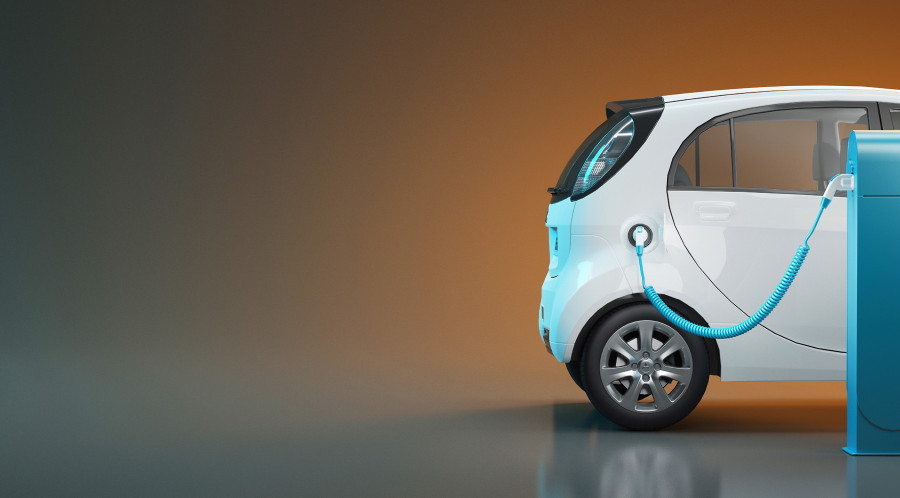Columns
EVs for cleaner transportation in Nepal
As the country becomes self-reliant on electricity, we should prioritise investing in electronic vehicles.
Marshal Rathour
Recently, there has been a rise in innovative solutions and technologies combating environmental pollution and climate change. As vehicular exhaust is one of the major sources of air pollution, the automobile industry introduced a new technology based on green energy to run vehicles. Most of the major auto makers have already begun manufacturing electric vehicles (EVs) that use rechargeable batteries instead of fossil fuels. The most significant advantage of EVs is that it minimises pollution and improves air quality in cities. Furthermore, pure electric vehicles do not produce carbon dioxide while driving, significantly reducing air pollution. Compared to other fossil-fuel-based vehicles, they are economical and require little maintenance.
Nepal has also seen a rise in the use of EVs in recent years. Many automobile industries have appointed their distributors and set up showrooms in the country. In the NADA Auto Show held last month, EVs became a centre of attraction and grabbed people’s attention. Automakers and governments worldwide are pressing towards a more sustainable approach to mobility, sustainable development and green economy, and Nepal is gradually following in their footsteps. The then Finance Minister Bishnu Prasad Paudel announced the reduction of greenhouse emissions and turning Nepal into an EV-based mobility economy by 2030. The EV craze seems to be rising, with a demand of around 2,500 cars imported into Nepal in the last fiscal year.
Sustainable approach
The United Nations General Assembly set the Sustainable Development Goals—17 interrelated global goals designed as “a blueprint for a better and more sustainable future for all”—in 2015, which are to be achieved by 2030. Considering the characteristics of EVs, there are challenges and concerns about ensuring their sustainability. Nevertheless, the governments of France, England, Norway, the Netherlands and India have committed to switching to EVs. To mitigate pollution’s environmental impact, India aims to achieve around 40 percent of its total installed electricity capacity from non-fossil fuel-based energy sources by 2030. A strong boost to clean mobility is essential if India has to reach its SDG goals. Since India has chosen EVs as the way forward for its transport system, its automobile industries have started manufacturing EVs, considering the future demand. Nepal imports vehicles from India and third-world countries; among them, most brands are manufactured or assembled in India. As India is Nepal’s closest neighbour in terms of easy accessibility of goods, it is fit to assume that most of the vehicles arriving in Nepal in future will also be EVs.
Challenges and concerns
Even though different brands of EVs are running in Nepal, these have mainly reached the affluent population. Besides TATA Tigor, Tiago, Wuling, Theego Henry, and a few others, TATA Nexon, MG, BYD, Hyundai, and Kia are increasingly running on Nepal’s roads. They cost over Rs4 million in Nepal.
The government policy should be clearer and needs to focus on what impact we are looking forward to having. Moreover, moving towards EVs is an ambitious and expensive undertaking. So, the country needs to be financially prepared for such a rapid transformation as it will require a significant amount of investment in the infrastructure, which is necessary for establishing the charging stations and road quality enhancement for electric vehicles. The price of EVs, tax incentives and encouraging bringing them should be considered.
EVs are suitable to some extent for countries like Nepal where a large amount of fossil fuel has to be imported to run the vehicle. For that, Nepal needs to make payments on Indian currency for which the government has to buy Indian currency in exchange for the US dollar. As Nepal is working towards self-reliance on electricity for domestic consumption and has begun its export to India, this would positively impact the growing use of EVs. Big hydropower projects like Arun-III, Budhi Gandaki, and so on are in the development and production process. If things go as planned, Nepal will have abundant electricity in the coming days, making consumption in the domestic market and exporting to India, Bangladesh and other potential markets. Nepal must enhance its electricity consumption capacity and develop a suitable and substantial policy to encourage domestic consumption, regarded as the green energy and backbone of the country’s sustainable development.




 16.12°C Kathmandu
16.12°C Kathmandu















